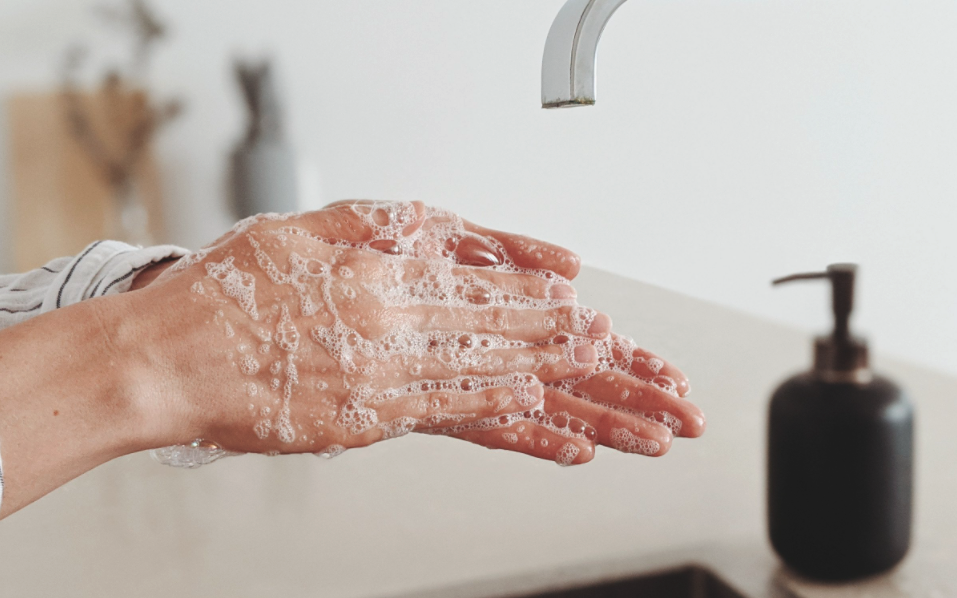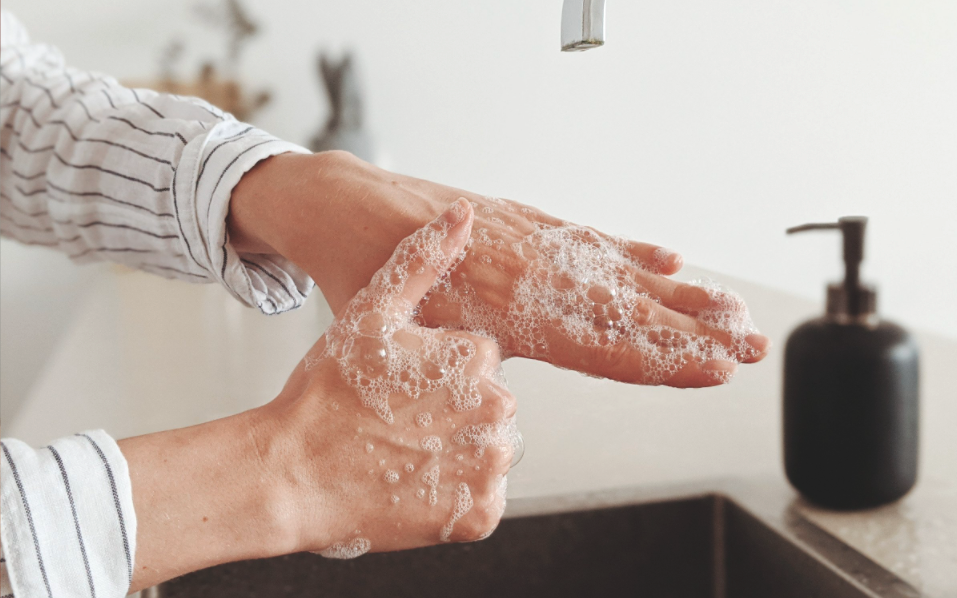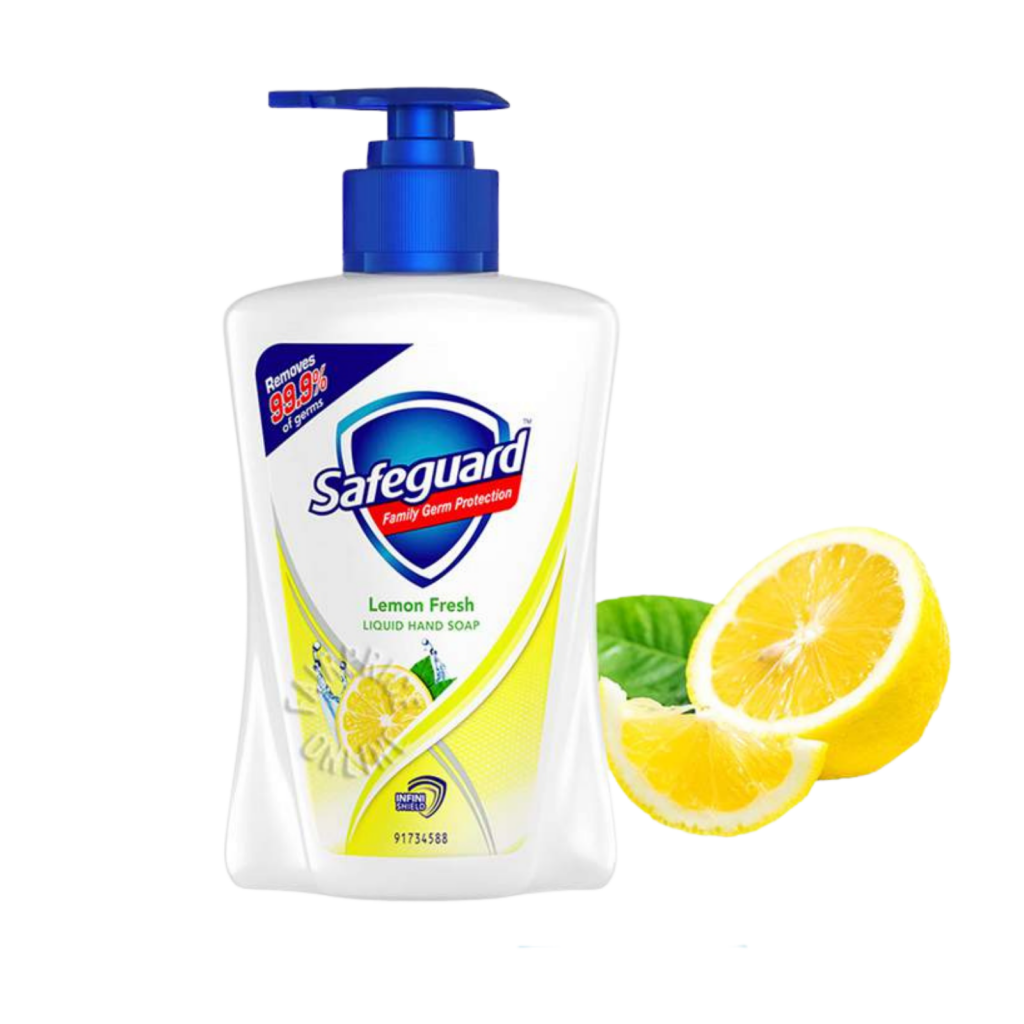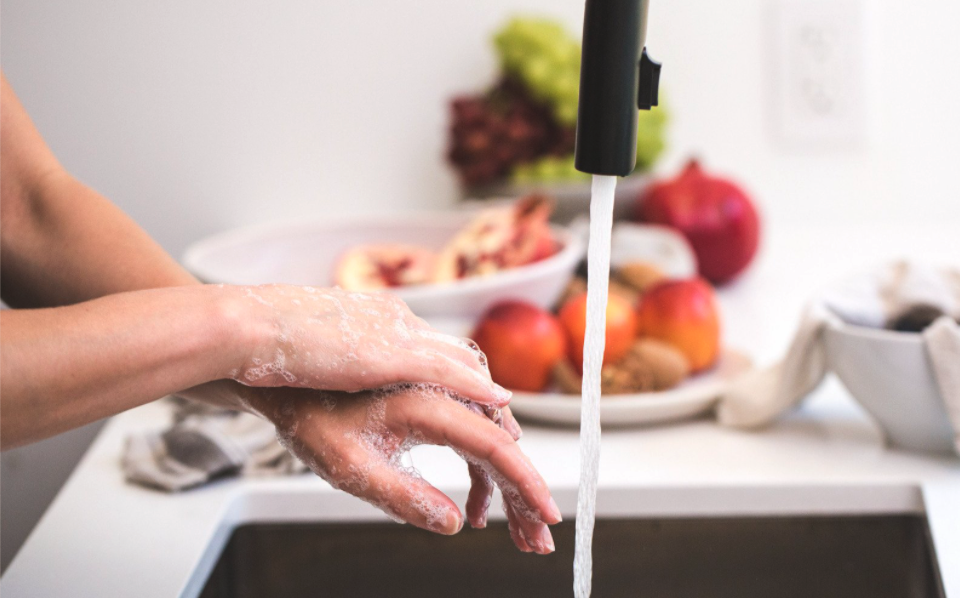Though we may not be able to see them, our hands pick up lots of germs and dirt from the different surfaces that we touch. Therefore, washing our hands is crucial in preventing diseases from spreading.
Let’s keep our hands clean and loved ones safe with these 7 simple steps of handwashing!
If you’re looking for some great deals, you can check out these affordable supplies for hand soap and refill sets!
Why is it important to wash your hands?
The unfriendly microbes that are picked up by your hands can be responsible for causing different types of illnesses such as diarrhoea and respiratory infections.
They can then spread from one person to another when you eat or touch your face without washing your hands. Hence, proper handwashing will prevent you and your loved ones from falling sick!
7 steps of handwashing
These 7 steps of handwashing have been endorsed by the World Health Organisation (WHO).
Recommended duration for washing hands: 40 – 60 seconds


Step 0: Wet your hands and apply soap
For a start, use clean water to wet your hands. Take enough soap to cover your entire hands and wrists.
Note: Avoid washing your hands with hot water as it may dry out your skin.

Step 1: Rub your palms together
Now you’re ready to begin scrubbing!
Put your palms together and rub in a circular motion.

Step 2: Rub the back of each hand with interlaced fingers
Next, place your right palm over the back of your left hand and rub with your fingers interlaced.
Once you’re done, do the same with your left palm over the back of your right hand.

Step 3: Rub your hands together with interlaced fingers
Clean in between your fingers by rubbing your palms together with fingers interlaced.

Step 4: Rub the back of your fingers
It’s now time to clean the back of your fingers!
Clench your fingers and interlock them with one another. Rub them against your palms and switch over once you’re done with one hand.

Step 5: Rub your thumbs
Clean around your thumb by wrapping one hand over the other thumb and rubbing in a rotational motion.
You can do the same for the other side once you’re done.

Step 6: Rub the tips of your fingers
Finally, rub your fingertips on the palm of the opposite hand in a circular motion. Swap over to do the same for your other hand.

Step 7: Rinse and dry your hands
The last step is to rinse your hands thoroughly with clean water and dry them.
Note: Instead of leaving the water running, use the side of your arm to turn the tap on and off.
Tip: Use hand cream or lotion after washing your hands to prevent dry skin
The natural oils and wax in your skin form a protective layer that prevent your hands from becoming dry. However, washing your hands with soap and water will break down this protective barrier.
If you suffer from eczema, frequent hand-washing could even leave your skin feeling irritated and looking flaky and red. Thus, to ensure that your skin remains moisturised, apply some hand cream or lotion after washing your hands.
When to wash your hands
You’re encouraged to wash your hands in the following situations:
- Before and after
- Meals
- Grocery shopping
- Taking medication
- Dripping eye drops
- Taking public transportation
- Touching your or someone else’s mobile device
- Coming into contact with someone who has an infectious illness
- Before, during and after
- Food preparation
- After
- Coughing, sneezing or blowing your nose
- Shaking hands
- Changing diapers
- Touching money and/or receipts
- Touching lift buttons
- Touching trash
- Touching animals
- Using the restroom

Do note: This list isn’t exhaustive and you should always wash your hands in situations where you think the risk of contracting germs is high!
Types of hand soap
All types of soap are suitable for washing hands but you’re more likely to find liquid hand soap in public toilets. Additionally, though foam soaps are said to be less effective compared to their liquid counterparts, they’re adequate for home use.
For greater hygiene, you can also take note of these steps when storing or refilling your soap:
- Bar soap: Place the soap in a self-draining holder. Before replacing with a new bar of soap, make sure to clean the holder thoroughly first!
- Liquid and foam soaps: Once the containers are empty, wash them thoroughly before refilling.

Safeguard Liquid Hand Soap
Safeguard Liquid Hand Soap can remove up to 99.9% of germs and provide up to 12 hours of protection.

Kirei Kirei Anti-bacterial Hand Soap
Kirei Kirei Anti-bacterial Hand Soap contains antibacterial and antiseptic ingredients. It also contains peach extract to keep your skin smooth and moisturised.

Lifebuoy Bar Soap
Lifebuoy Total’s special formula is designed to fight germs and provide stronger protection for your loved ones.
Tip: Use hand soap with moisturising properties
Some hand soaps may not just be tough on germs but your hands as well.
If you have dry or sensitive skin, you may want to get a soap with a more gentle formula. Look out for humectants like glycerin, an ingredient that can help to draw water to the skin and keep your hands moisturised.
Disinfecting your hands without soap and water
If you happen to be in a place where soap and water aren’t readily available (e.g. when hiking) you can use an alcohol-based hand sanitiser to disinfect your hands.
According to the Ministry of Health (MOH), alcohol-based hand sanitisers are great for reducing the number of microorganisms on your hands. They can also prevent the spread of germs, reducing your likelihood of falling sick.

Tip: Use alcohol-based hand sanitisers that contain at least 70% alcohol
It’s important that you use hand sanitisers with a minimum of 70% alcohol concentration! Any less may be less effective at killing germs and just reduce their growth.
However, hand sanitisers tend to be less effective when your hands are dirty or greasy. They may also be less effective at removing chemicals such as pesticides from your hands. Therefore, washing your hands with soap and water is still the best option if it’s accessible.
How to sanitise your hands
Similar to washing your hands, sanitising your hands with the proper technique will allow you to maximise its effectiveness.
Step 1: Dispense a coin-sized amount of the liquid or gel onto your palm. It depends on the size of your hand — a good gauge would be a 5-cent coin for kids and a 10-cent coin for adults. You’ll need to use enough of the hand sanitiser to ensure it’s effective!
Step 2: Rub your hands together and spread it over the back of your hands and between your fingers.
Step 3: Do this until your hands are dry. It’ll typically take about 25 – 30 seconds.
How to encourage children to wash their hands
Handwashing may not be the most fun activity for children. Regardless, to help you and your child get the job done, we’ve come up with 5 different ways to make handwashing a lasting habit before meals and after playtime!

1. Use a foaming hand soap
Most children love to play with foam — it’s soft and reminds them of clouds. Using a foam hand soap will turn handwashing into an intriguing experience where they can watch their hands get enshrouded by lots of white foam!

2. Create or sing a song
Children tend to get distracted easily. Holding their attention long enough to wash their hands for 60 seconds is no easy feat.
You can keep your child occupied by creating and singing a song while washing their hands. If you need some help finding a song, here’s a simple song about handwashing by the Health Promotion Board (HPB)!

3. Make fun soaps
Who said bar soaps have to come in boring rectangular blocks? Constantly intrigue your child with bar soaps of different colours and shapes and watch them coming back for more.

4. Make handwashing a routine
Establishing a routine can be one of the best ways to develop a habit in your child. You can do this by making sure that they wash their hands at specific times and reminding them when they’ve forgotten.

5. Lead by example
Children have the tendency to mimic their parents’ actions.
When you wash your hands regularly, they’re likely to be more open and excited to try it out for themselves!
Keep your hands germ- and bacteria-free
Protecting your loved ones from diseases begins with handwashing. Make this a fun activity for your children as well with our simple hacks and tricks today!
Please note: The efficacy of the tips provided may vary depending on skill, quality of tools used and the build of machines involved (if any).


